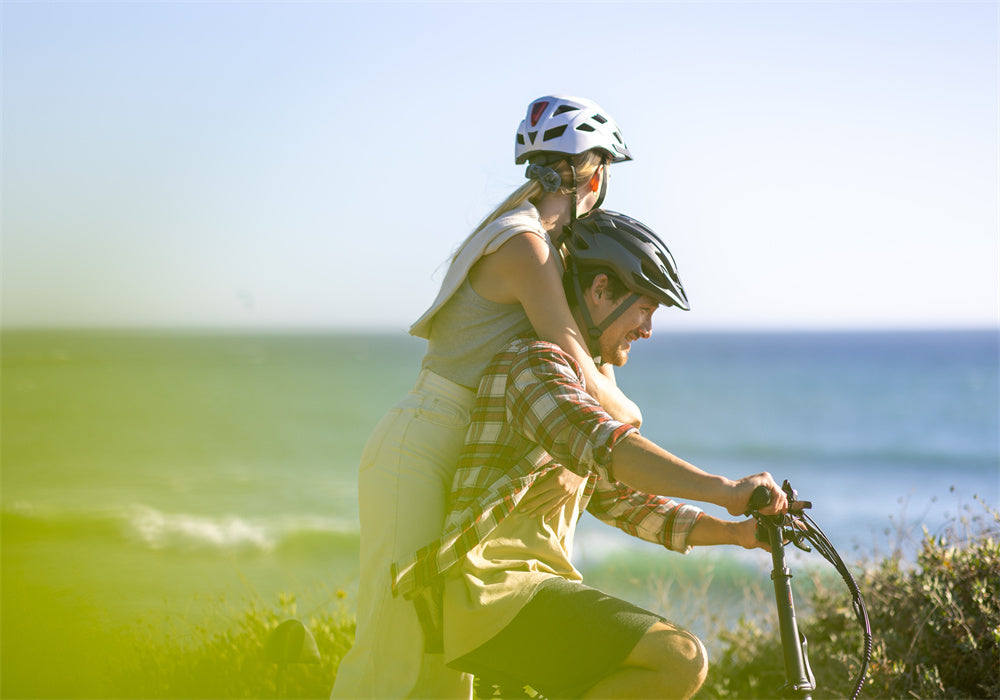Class 2 electric bikes represent a significant evolution in the electric bicycle industry, combining the physical benefits of cycling with the convenience of motor assistance. Defined by their throttle-assisted motor capability, these bikes allow riders to travel at speeds of up to 20 miles per hour without pedaling. This feature sets them apart from other e-bike classes and makes them highly desirable for those who may require a less physically demanding ride, such as commuters navigating hilly cities or riders recovering from injury.
Unlike their Class 1 counterparts, Class 2 e-bikes are equipped with a throttle mechanism that activates the motor directly. This means riders can achieve immediate propulsion with just the push of a button—a crucial advantage when starting from a stop in traffic or when extra power is needed swiftly. Additionally, most Class 2 bikes also offer pedal assist technology, which helps conserve battery life and allows for a more traditional cycling experience when desired.

What Is The Difference Between A Class 1 And Class 2 Ebike
The distinction between Class 1 and Class 2 e-bikes hinges primarily on how the bike's motor is engaged during operation. Class 1 bikes, which are increasingly common in urban settings, only offer pedal-assist technology, which requires the rider to be pedaling to activate the motor. This system automatically disengages the motor once the bike reaches 20 mph. Class 2 bikes, however, feature both pedal-assist and a throttle, which can be used independently of pedaling.
Here are the primary differences:
- Mode of Operation: Class 1 bikes operate solely under pedal power with motor assistance, whereas Class 2 bikes provide the additional option to use the throttle for motor power without pedaling.
- Utility in Traffic: The throttle function on Class 2 bikes allows for easier maneuvering in stop-and-go urban traffic by providing a quick and effortless way to accelerate.
- Accessibility: The throttle feature makes Class 2 bikes more accessible to a broader range of people, including those who may not be able to pedal continuously.
Data from urban mobility studies suggest that e-bikes, especially those with throttle capabilities like Class 2, reduce commute times by an average of 20% compared to traditional bikes.

Why E-Bikes Are The New Favorite
- The rising popularity of electric bikes in the United States can be attributed to their blend of efficiency, accessibility, and environmental benefits. They serve not only as a bridge between traditional bikes and motor vehicles but also as a standalone solution that provides flexibility in various commuting scenarios. In 2021, sales of e-bikes in the U.S. grew by over 145%, illustrating their increasing acceptance as a mainstream mode of transport.
- E-bikes like the Class 2 models enhance urban mobility by offering:
- Reduced Commute Times: E-bikes enable faster travel, especially in congested city environments.
- Lower Costs: Operating an e-bike is significantly cheaper in the long term compared to cars when considering fuel and maintenance costs.
- Health Benefits: Even with motor assistance, riders can engage in physical activity, which is adaptable to their fitness levels and personal health goals.
- Environmental Impact: E-bikes contribute to reduced urban noise levels and lower carbon emissions.

How Fast Is A Class 2 Electric Bike
Class 2 electric bikes are capped at a maximum speed of 20 mph with motor assistance, aligning with most e-bike regulations across states. This speed cap ensures safety while allowing significant mobility enhancement without requiring a driver’s license.
- Safety Features: Manufacturers equip these bikes with enhanced brakes, wider tires, and sometimes even integrated lighting systems to ensure safety at higher speeds.
- Regulatory Compliance: Adhering to this speed limit also means that Class 2 e-bikes are often treated like regular bicycles in terms of road laws, making them a highly convenient option for urban travel.
- Performance Consistency: The electric motors used in these bikes are designed for longevity and consistent performance, even at their top speed of 20 mph.

Top Class 2 E-Bikes At TESWAY
At TESWAY, we pride ourselves on offering a curated selection of high-quality Class 2 electric bikes designed for various needs and preferences.
TESWAY Walker
This TESWAY Walker is an urban-centric e-bike designed to provide an unparalleled riding experience. Equipped with a highly efficient 500 W rear hub motor, this e-bike delivers impressive speeds of up to 25 mph and a longer range.
Its sturdy frame, plush seat, wide tire profile, and advanced drivetrain make it a top choice for riders who prioritize comfort and performance during urban commutes or casual weekend rides.
TESWAY S5 Pro
This bike, the S5 Pro, is an innovative foldable e-bike that redefines urban transportation. Crafted with a lightweight aluminum frame and a powerful 750 W motor, this compact e-bike ensures a smooth and efficient ride with an impressive range of up to 100 miles.
Its sleek looks, intuitive electronic shifting system and convenient folding function make it the ultimate choice for riders looking for a stylish and space-saving transportation solution.
TESWAY S7
This TESWAY S7 is a wide-tire cruiser e-bike that combines affordability with aesthetics. Equipped with a rear luggage rack, integrated lights and front suspension forks, this model guarantees a pleasant and comfortable ride. At TESWAY you can find any Ebike accessories you need.
FAQs
How do I operate an e-bike?
Operating an e-bike involves turning on the battery, selecting the desired level of pedal assistance, and then pedaling as you would on a traditional bike. Some models also include a throttle, which can be used to engage the motor without pedaling.
What are the best practices for riding an e-bike in traffic?
Always wear a helmet, use bike lanes when available, follow traffic laws, use hand signals, and maintain visibility with reflective clothing and lights.
Can e-bikes be used on bike trails and bike lanes?
Generally, yes, e-bikes are allowed on bike trails and lanes, but it's important to check local regulations as some areas may have restrictions based on the type of e-bike or its maximum speed.







Share:
Differences in eBike Chargers — What You Need to Know Before You Buy
Boost Your Ride: Throttle vs. Pedal Assist – Which Powers You Better?